#also entering the incredibly obvious product placement era
Text
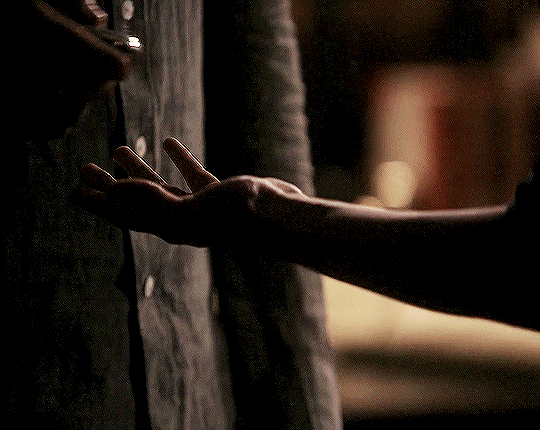
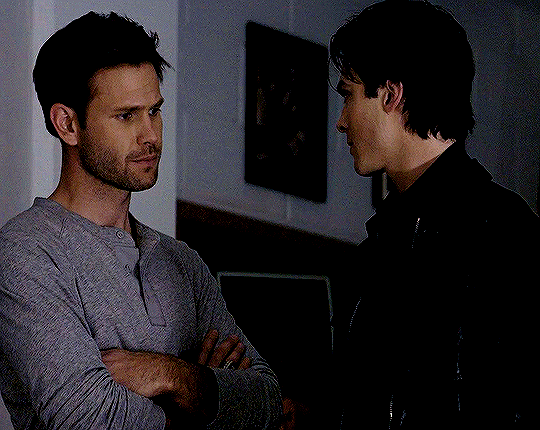

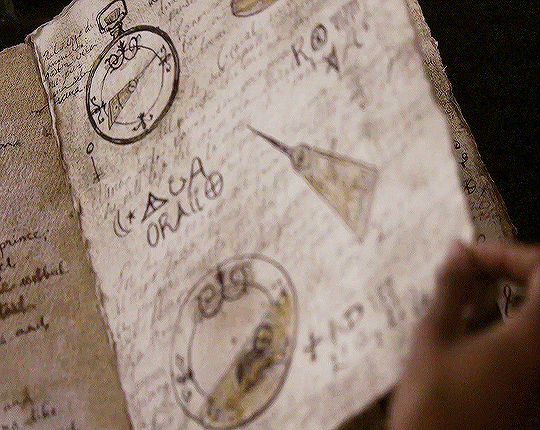

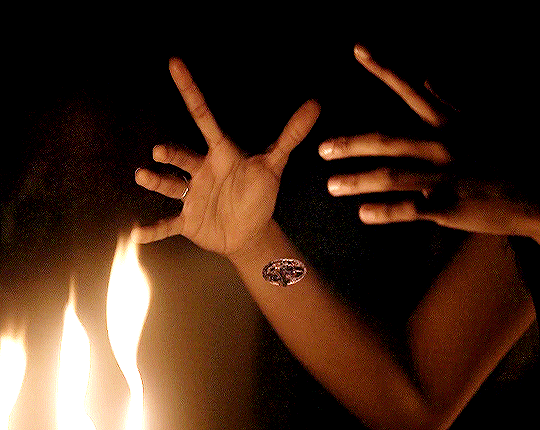
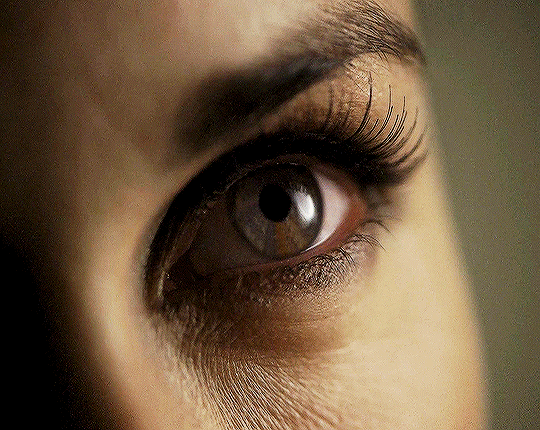

I do believe in killing the messenger. You know why? Because it sends a message.
The Vampire Diaries S1 E21 Isobel
one gifset per episode 21/171
#tvdedit#the vampire diaries#elena gilbert#stefan salvatore#damon salvatore#stelena#delena#tvdgs#tvd#the vampire diaries season 1#tvdversegifs#tvdverseladies#my edit#mine#my gifs#bonnie bennett#isobel flemming#alaric saltzman#when i watched the l word for the first time i was very excited to see isobel which quickly turned to annoyance over jenny being the worst#so close to seeing katherine ahhh#also entering the incredibly obvious product placement era#this might be my favorite set sorryyyyyyy
121 notes
·
View notes
Text
How Not To Refine a Horror Game: Clock Tower 3

Clock Tower 3 is many things: a product of a developer acquiring the rights to a series they had no hand in creating, a mashup of several interesting and competing ideas that offer a lot of promise, a disjointed final package that suffered from a lack of singular vision. In the simplest terms, it’s a survival horror game made by Sunsoft and published by Capcom for the Playstation 2 in 2002. Following the collapse of Human Entertainment, the developers responsible for creating the Clock Tower series, Sunsoft acquired the rights and set out to push the franchise toward a larger audience. Their attempt to do that meant making sweeping changes, and seemingly making as many of them as possible.
Part of what made the Clock Tower games so interesting was their limited mechanical complexity. They acted more or less as point and click adventure games. Players move a cursor using the D-Pad on the controller to highlight objects in the environment and move the player character around the screen. They use a menu system to interact with the things they find in the environment. The straight forward nature of this control scheme was deliberate. It created a separation between what was happening on screen and what the player intended to do. That lack of instant response helps build tension, which is something you want as much as possible in a horror game. With the changing tides of the industry and the increasing understanding of how to move characters around in 3D space, control over the player was the biggest overhaul made.
In Clock Tower 3, you control your character, Alyssa, with the left analog stick. Her movement is very similar to the movement found in the Resident Evil remake for Gamecube or the Fatal Frame series. Moving the analog stick in a direction will move Alyssa in that direction. Holding a direction will continue Alyssa’s momentum in that same direction despite changes to camera angle, until the analog stick is released. Releasing the analog stick resets the direction back to zero, essentially. Alyssa’s default speed is running, though she can walk as well, accomplished by holding the Square button while moving. She can also crawl, which is performed by holding the Circle button and moving with the analog stick. While this is technically more complicated than the other games in the series, the reality is that having direct control of the protagonist is significantly more intuitive for most players, especially at the time of its release. Tank controls and point and click interfaces were rapidly being exchanged for more direct options. While remembering which button crawls and which one walks can cause a few hiccups, those movement types are not used with enough frequency to cause any serious trouble for players, and it’s a small trade off for the possibilities that direct control opens up.
Being used to Playstation 2 era horror games, I enjoy how Alyssa controls. The complexity of movement does, however, highlight some issues with development. For instance, setting the default movement to running is fine. The levels are large enough to accommodate running and Alyssa’s run speed feels appropriate. The problems begin with walking. Since it was included in the game, one would think that the player might need to utilize walking at various points in the game. The obvious use would be to move around more quietly so as not to arouse the game’s antagonists. Early in the first level there are even reinforcements of this principle. As you make your way through a tunnel, there are some tin cans that Alyssa will kick over if she runs through them, but that will stay undisturbed if she walks. It’s a brilliant use of the environment to pull the player into the world and make them aware of their effect on the things around them. In truth, these little additions have no real impact at all. You can kick over all the cans you want, or stomp on as much broken class as your heart desires. It doesn’t change anything that happens in the game. They are simply elements of game polish.
It definitely feels as though the walking was designed to work in the way I described. It’s inclusion really makes no sense otherwise. If this is true, it points to the likelihood that Sunsoft didn’t have the time to fully implement it. They either didn’t build it into the villain AI or they didn’t create enemies to tie in specifically to this mechanic. What this leaves the player with is a useless movement option. There are no benefits whatsoever to walking. In order to escape those in pursuit of Alyssa, she will need to run. In order to stay out of the clutches of the various restless ghosts, she will need to run. At no point ever does the player ever need to force her to walk. It’s a shame that this was not more fleshed out. Since you come across the cans so early on in the game, they seem specifically built toward subtly teaching you about a core component of eluding capture. There’s a definite stealth aspect being teased, and to have that tease go unrewarded feels deeply unsatisfying.
While walking turned out to be a disappointing inclusion, it was not the only mechanic to get short shrift. Peppered throughout the levels are green spiral indicators that let the player know they can evade a pursuer there, or hide from them. Hiding from enemies is one of those no-brainer ideas for horror games that it’s a bit of a mystery why so few games actually implement it. Their implementation in Clock Tower 3 gives the player the impression that they will be an integral part of the game. For a while, they are. In the first level, there is one particularly useful hiding place behind a curtain in the house where you first come across Hammer, the Subordinate who chases after Alyssa throughout the stage. Hiding behind a curtain is a pretty unconvincing place to hide, but it works as intended and when used properly, can really give you some breathing room when exploring the house for key items.

He’ll never think to look behind a thin hanging sheet that exists for no practical reason.
The dubiousness of the hiding places only increases, and the effectiveness of them also goes down. In that same first level, there is a locker that Alyssa can run into. The main problem with it is that the first time the player discovers it, it’s likely with Hammer right on their heels. The AI of enemies is not particularly robust, but it’s good enough that an enemy will attack you in a hiding place it watched you enter. A hiding spot found in a later level is tucked behind a fish tank that can clearly be seen through. When you look directly at the axe wielding fiend who wants to kill you through some glass, yet no reaction is elicited from the assailant, the consistency of the world really breaks down and the tension is lost.

The impenetrable defense of transparent water.
The silliness of these designated hiding places is important to highlight because there are other areas of levels that can be hidden in that are not marked as such, they just logically work out to shield you from the view of those who would see you dead. In the concert hall in the first level, there are two places you can usually find respite, even though the game does not indicate explicitly that you can hide there. In the entryway, you can duck behind a counter to stay out of view of Hammer. You can also go behind the large curtain hanging on the stage and wait there until the coast is clear. This is the kind of design that the entire game should have been built around. The placement of the designated spots is conspicuous enough that they would have been hard to miss by curious players to begin with. The other side of them working as intended, of course, would have been to make sure there was appropriate quiet time and space between bouts of running for your life. The relentlessness of the Subordinates and the compactness of the level designs means there just wasn’t enough room for this idea to breathe properly, and it’s a shame, because it was probably the most promising aspect of the game.
Things get a lot better when it comes to Alyssa’s defensive capabilities. During the majority of gameplay, Alyssa can use Holy Water to stun enemies, open doors, or activate portals. She begins with just two uses of the Holy Water per fill of the vial, but this increases as each stage boss is defeated. The stun effect, which is the main method of outmaneuvering enemies, temporarily stops them from moving. The stun does not last long, but it’s enough to put a decent distance between Alyssa and the Subordinates, enough to either make it to a hiding place without being followed in or to reach the next objective that will alter the Subordinate’s behavior. Refilling the vial is also a fairly straight forward affair. Refill stations are rarely too far away due to the small level layouts. Over time, the need to refill also drops as more uses can be held per refill. The multi-purpose aspect of the Holy Water is probably its greatest asset. It certainly isn’t the sole focus of the interactive aspects of the game, as there are single use items of various types as well, but it is the most frequently used, and there is tension created when you’re not sure whether to use some Holy Water to open a door and press on, our double back and refill before going into the unknown.
Like with all of the game’s mechanics, the Holy Water is a good idea that doesn’t get enough room to breathe. The small number of levels and their incredibly compact designs means that nothing lasts very long. You have to toss a lot of water around to get past Subordinates, you have to use two sprinkles of the stuff to open portals. The result is really just a lot of backtracking. This isn’t so bad, really, as the levels are small, as mentioned before, but it does mean you are basically guaranteed to run into an enemy again, which might prevent you from getting back to the portal or doorway with a full vial.
The most enjoyable part of the game comes at the end of each stage, when the Subordinate who was hunting you becomes the stage boss. These segments are where you go from being a helpless schoolgirl running away from monsters to a magical girl capable of banishing evil to some fate worse than death. This all happens because Alyssa is the most recent in a long line of Rooders (spelled ruders on the book in the cutscene, but Rooders in the game text), and as such, it is her duty to put the Subordinates to rest. During boss fights, Alyssa dons a magical bow capable of shooting arrows which bind Subordinates to the ground. Bind them enough times in sequence and she can fire off a powerful arrow capable of taking off huge amounts of the Subordinate’s HP.
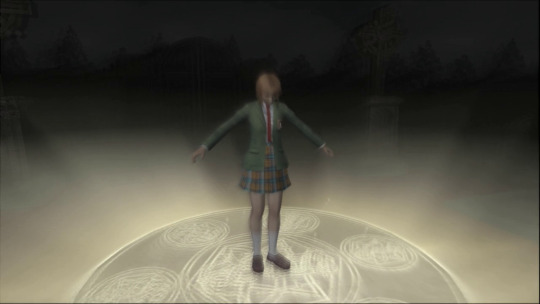
Moon Prism Power! Make Up!
There’s still a bit of helplessness tied to Alyssa’s control here. She still runs at the same speed as usual, and when her bow is drawn she cannot move around or adjust her aim. In order to bind Subordinates, arrows also have to be charged to their maximum capacity. The longer you hold down Triangle, the more charged your arrow becomes until it signals that it is binding. It’s very basic combat, but remarkably enjoyable. Baiting enemies into lengthy attacks takes some figuring out. Getting into the correct position to provide enough space for a full charge is not difficult, but it is interesting. It’s also very satisfying to bind enemies enough to activate those powerful shots, as they are ushered in through a cutscene reminiscent of a summon in Final Fantasy VII. There’s nothing revolutionary here, but it feels good to be able to put the hurt on the monsters that have been chasing you around every level, spouting off about how they’re going to get you.
From a narrative standpoint, the transformation into a magical girl makes perfect sense. It’s the cornerstone of the story. Alyssa’s entire involvement comes down to the fact that she’s a Rooder, and her grandfather has gone insane with the idea of binding his soul to hers in an effort to become a supernatural being. It’s not a particularly deep or surprising story, but it works well, and is probably the standout aspect of the game as a whole. From a mechanical standpoint, the juxtaposition of these two facets of gameplay are incompatible. There is just no justifiable reason why Alyssa can’t always be prepared to shoot arrows at bad guys once she discovers her power. Yes, it would completely destroy the survival horror aspect of the game, but at that point, you have to ask yourself, why exactly is this a survival horror game in the first place?
The final aspect of the game worth focusing on is the various spirits that harass Alyssa if she gets too close to them. These apparitions appear as various colored phantoms. They represent the dead who still have unfinished business in the living world before they can be put to rest. To allow them to pass on, an object of theirs must be returned to them (basically the entire premise of From Software’s Echo Night boiled down into its most basic implementation). Returning objects can reward the player with rare defensive items, or help to progress the story by opening up previously inaccessible areas. These are great additions to the game, but they, more than any other aspect, feel unfinished. The extra items that you get for returning items are not necessary to finish the game. They might help a little, but the game is easy enough without them. For those ghosts that help progress the story, it’s obviously much more satisfying to resolve their issues and get them out of limbo, but there just aren’t enough of these situations.
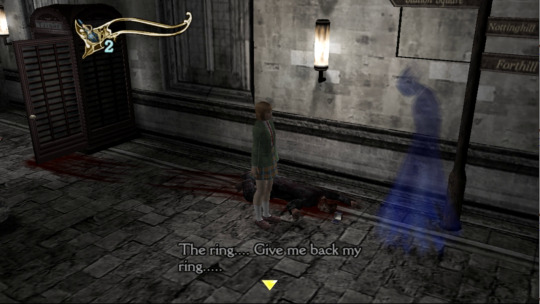
A lot of good it’s going to do your bloodied corpse.
The ghosts suffer the same shortcoming that nearly everything else does in the game, not enough space to breath in. The levels, well designed though they may be, are simply too small to flesh out all of the things the game tries to include and there just aren’t enough of them to vary out the experiences. This is why it feels like the Subordinates can never be given the slip for more than a minute or two at a time. It’s why hiding places are more of a tease than a useful escape, and why the backtracking is focused more on making sure you are fully stocked up on Holy Water than making progress through previously inaccessible areas. The game has very little quiet time, and for a survival horror game to truly manage tension well, quiet time must be existent and savored. Clock Tower 3 just does not have enough of it, and the result is that nearly everything in the game feels rushed and imbalanced.
The likely solution to all of the game’s problems would have been more development time. The ideas behind all of the mechanics are sound (if a bit incongruous at times), and they are implemented about as well as they could be given the circumstances. Sure, some of the hit boxes are a bit difficult to predict, especially with regard to Alyssa’s arrows, but they are consistent once you learn them. There is just so much going on in the game, it feels as if it was intended to be much bigger. Maybe due to the time of its development, Sunsoft seems to have just scaled everything down rather than reduce the complexity of the game to its most crucial elements. It’s hard to fault them for that decision, though the decision really didn’t pay off for Sunsoft. The game Capcom ended up publishing was nothing like the previous games in the series, and one that felt loaded with filler despite its short length. It’s a better game than one might have expected, but sadly, it just wasn’t enough to make it a classic entry in an increasingly crowded genre.
2 notes
·
View notes
Text
REVIEWING THE CHARTS: 13th October 2019
This was a pretty important week, as while we only had around four debuts, there’s finally some more shake-up in the top 20, which had been pretty stagnant for a while, and two new arrivals entering directly in the top 20 so without further ado, let’s review the charts.

Top 10
Still at the top for its second week this week is “Dance Monkey” by Tones and I, also entering at #96 in the US, which is expected as I’ve been predicting a crossover for weeks, but I did not expect this to be such a global hit in all honesty, mostly since the song felt too low-key to just not be a European indie fluke hit. I suppose I really have no idea what becomes a hit or not in 2019.
Our first new arrival is at number-two, with Travis Scott’s lead-off single, “HIGHEST IN THE ROOM”. The song debuted at #1 in the US, but here it’s just barely been kept at the runner-up spot, and I don’t mind either way, because while “Dance Monkey” may be a lot more distinct, both of the songs are very middling in terms of quality. This is Scott’s ninth ever UK Top 40 hit, sixth Top 20 and his third Top 10 hit. In fact, its debut at #2 made it trump “Zeze” with Kodak Black and Offset (peaked at #7) as Travis Scott’s highest-peaking song in the UK. How on Earth it did that is for me to talk about later, so for now let’s move on, as I don’t see this sticking.
Since there are no massively dramatic changes in the top 10 other than the debut of “HIGHEST IN THE ROOM”, most songs here are just down one space, including “Ride It” by Regard featuring Jay Sean to number-three.
AJ Tracey’s “Ladbroke Grove” is also down one spot this week to number-four.
Interestingly, up one position this week is “Circles” by Post Malone, which I’m going to say now, will become a #1 hit near Christmas if not sooner.
Kygo and the late Whitney Houston continue the trend of brief descent as “Higher Love” is down a spot to number-six.
Joel Corry’s “Sorry” featuring uncredited vocals from Hayley Mays hasn’t moved since last week at number-seven.
Up six spaces from last week and entering the top 10 for the first time is “Outnumbered” by Dermot Kennedy at number-eight, becoming Kennedy’s first top 10 hit and this success should have been obvious from the start of its chart run, although personally I’m not a fan.
Dominic Fike’s “3 Nights” is down a spot to number-nine.
And finally, rounding off the top 10 are Young T & Bugsey featuring Aitch with “Strike a Pose”, also falling a singular space this week.
Climbers
Our climbers here are pretty sparse, mostly affecting songs that debuted last week. Aitch gets his fifth UK Top 20 hit as “Buss Down” featuring ZieZie (It’s his first) is up five to #20 thanks to the release of the video. Outside of the top 20, “South of the Border” by Ed Sheeran featuring Camila Cabello and Cardi B experiences a pretty uncommon climb of 16 spaces to #24 off of the debut, although that doesn’t mean it’s of any quality, of course, as this is probably the worst song on the tone-deaf Ed Sheeran collaborations project. Hopping off of that success is Camila Cabello’s solo work, as for whatever reason, “Liar” is up eight positions to #27 this week. Also increasing off of its debut last week is “Turn Me On” by Riton, Oliver Heldens and Vula, moving up eight spaces to #29, and that’s all.
Fallers
While we had some pretty big climbers, they really do not compare with the impact of the fallers this week, with enough quantity but the songs themselves are genuine smash hits for the most part, although I still feel like we could have easily had some more notable drops here. “Bruises” by Lewis Capaldi is down five to #16 off of the re-entry, “Taste (Make it Shake)” by Aitch suffers streaming cuts (see: dumb UK chart rules that admittedly keep the chart constantly fluctuating and interesting) down a whopping 22 spaces, landing at #26, “Senorita” by Shawn Mendes and Camila Cabello is down six to #30, “Beautiful People” by Ed Sheeran featuring Khalid is thankfully down six to #34, “Playing for Keeps” by D-Block Europe featuring Dave has floundered entirely off of the debut, down 16 spaces to #37, and finally, “Harder” by Jax Jones featuring Bebe Rexha is down seven spots to #39.
Dropouts & Returning Entries
It seems like for a while, we’ll just have Post Malone songs dropping out and exchanging themselves for... other Post Malone songs. This week, “Goodbyes” featuring Young Thug dropped out from #23 and “Sunflower” with Swae Lee from the Spider-Man: Into the Spider-Verse soundtrack dropped out from #31, in exchange for other Post Malone songs outside of the top 40 to re-enter (“Take What You Want” and “Saint-Tropez”). Other drop-outs include “Nookie” by D-Block Europe featuring Lil Baby out from #30 and “boyfriend” by Social House featuring Ariana Grande out from #34, but there are no returning entries (in the top 40), so it’s time to talk about the new arrivals.
NEW ARRIVALS
#38 – “Graveyard” – Halsey
Produced by Jon Bellion, Ojivolta, Louis Bell and the Monsters and the Strangerz – Peaked at #11 in Belgium and #44 in the US
Halsey’s album release has been pretty messy but to be fair to her and her team, I’d have no idea what to do after how globally massive “Without Me” was, as I don’t think Halsey would have wanted to continue down an R&B-pop lane... and clearly, she didn’t, as her next single, released months after, was “Nightmare”, a pop punk belter that pretty much nobody liked and it underperformed heavily, which is unfortunate as I actually quite enjoyed that song. Now Halsey’s back with a safer, more accessible single from her upcoming album Manic, set to release in 2020, and promoted by a livestream of her painting the album cover, for whatever reason, and, well, we’ll see how it holds up to her hit singles from other album eras, including “New Americana” and... “Bad at Love”... okay, so if this isn’t terrible, I’m marking a pretty great improvement on Halsey’s part. Regardless, this is her eighth UK Top 40 hit and... why does this need seven writers again? Five of those writers are confirmed producers, but Halsey and her co-writers seem to be out to damage her singer-songwriter/indie queen image, signifying perhaps that this new album will be more of a traditional pop record. Okay, I’m not going to lie, I’m pretending to be interested in whatever Halsey’s doing, I’m just excited to listen to this because I love Jon Bellion. I always forget he exists, but whenever he produces a new single or comes out with a fantastic album out of nowhere like last year’s Glory Sound Prep, I’m pleasantly surprised. You can definitely tell “Graveyard” is a Bellion production, albeit it does feel his maximalist style has been watered-down to fit Halsey’s cynical songwriting. The sweet guitar is definitely reminiscent of Bellion, but it’s chopped in an EDM-like fashion, and the bouncy synths are actually pretty cute surrounding Halsey’s... well, they sure are vocals. The tropical percussion sounds pretty cheap and the loop ends abruptly, with the vocals and synths occasionally clipping in the mix, which doesn’t really make much sense here, and in the chorus, Halsey punches in a line so blatantly that it is a painful, slightly off-beat jerk towards the next line. It’s probably the most incompetent production I’ve ever heard on a Halsey song, which is surprising for a song with five producers. You’d think someone noticed that during the process but that happens not to be the case... but it’s in the chorus, guys! Surely, you’d want the hook to not sound awkward and have, you know, any impact. It’s not a bad song, and it’s not like I had that high expectations, but somehow I’m still disappointed. Bellion can do better. Not sure about the other six songwriters, though.
Also, that bridge is absolutely pathetic, like come on, you didn’t even try.
#25 – “Playing Games” – Summer Walker
Extended version features Bryson Tiller – Produced by London on tha Track – Peaked at #16 in the US
Bryson Tiller isn’t credited on any of the British chart info, but his extended version is what’s getting the most plays, his verse is in the music video, Wikipedia credits him and the album adding this extended remix with Bryson Tiller is the only reason it’s even close to this high so let’s talk about Summer Walker. I mean, yeah, I like SZA too. Summer Walker to me seems like the amalgamation of all of the better female R&B singers to come before her that are in her same lane, in fact, some of the males as well. She’s like Khalid had a child with Jhené Aiko out of wedlock, but Jhene wants a DNA test as that child might have actually been with the Weeknd or another suspected dad, 6LACK. I don’t usually mind Summer Walker but I’m just frustrated with her. Ever since her debut mixtape Last Day of Summer dropped, I have been waiting for a single from her that doesn’t completely flout her talent, but it has yet to come, and when I like a song from her, it’s mostly because it has a sweet guest spot from someone else who knows how to play to their strengths, like Usher who has a placement on “Come Thru”, which probably should have been the lead single if I’m honest. Over It, Summer Walker’s debut album, was released last week to a lot of success, especially in the US, where it had the biggest ever streaming week for a female R&B project, and it featured an extended version of an already incredibly disappointing single released after she picked up a lot of traction with “Girls Need Love”, propelled by a Drake remix (It’s probably one of Summer’s best songs). “Playing Games” is one of the worst songs I think I have ever heard that reached the US Top 20, but it’s December in two months. List season is very much upon us. I don’t want to waste my energy. This will definitely still get Worst of the Week, but I don’t want to talk about it and spoil anything for the Top 10 Worst Hit Songs of 2019 list, as this will be pretty high on it.
#19 – “10,000 Hours” – Dan + Shay and Justin Bieber
Produced by Dan Smyers – Peaked at #2 in Canada and #4 in the US
Country music doesn’t appear on the UK charts often, it really doesn’t, but it’s had a pretty great year in terms of popularity, with so many of these random country songs that would have never peaked at higher than #30 in any other year are getting in the top 20, to the point where I’m worried I’ll have to start educating myself on the genre in case there’s ever a British country boom. “Whiskey Glasses” by Morgan Wallen, “The Git Up” by Blanco Brown, “God’s Country” by Blake Shelton, “Beer Never Broke My Heart” by Luke Combs, just to name a few. Is “Old Town Road” a product of this sudden surge in country’s popularity or is it a catalyst? I’ll leave that to thinkpieces and video essays to find out because I don’t care and I don’t know a damn thing about country, I just know I love this song, and I can’t exactly figure out why. Dan + Shay are a country music duo and arguably the biggest country band right now, with massive sleeper hits like “Speechless” and especially “Tequila” which was on the Hot 100 for about a year if not more yet it never peaked higher than #21, still making the Year-End top 40 for 2018, and I didn’t mind that song either but mostly because it was very far away from what I felt was actually country... it’s safe to say that “Tequila” now sounds like it comes straight from Roger Miller because “10,000 Hours” is about as country as strawberry ice cream is healthy. I mean, it has the right components to fill that quota, but it does not make use of them in a way that fulfils the criteria, and more often than not, completely dismisses them to focus on quality. This is basically a boy band song. It starts with a lush guitar sprinkled over a barely audible drowned-out drum break, with Dan and/or Shay singing in their traditional high-pitched tone with a pretty much non-existent country twang through a pretty quick first verse. Once that chorus hits, I fell in love with this song. It’s so cheesy, it’s so melodramatic, yet it works incredibly well because it feels like a genuine declaration of love and dedication towards each artists’ respective wives, and yes, you could say that it’s corny or saccharine, and I’d fully agree with you, but that’s why it’s worth listening to. Dan’s voice especially sounds pretty great for this type of song, and the vocalising in the post-chorus is pretty sweet, though I expected it to either run into Justin’s verse a bit more fluidly or go off into a bridge on its own, but it never really does, which is disappointing. Justin’s verse, as most of his verses are nowadays, is hilarious, with a punch-in that sounds like a line was completely replaced with the “Did you get your middle name from your grandma?” line, which has an oddly creepy inflection that is not helped by Justin’s huskier Auto-Tuned drawl, but his cooing and harmonisations otherwise work, especially in the pre-chorus. I also love how the drums come in for the chorus. The bridge is great on its own (albeit slightly awkward, which has its charm), but I’d appreciate it being expanded and having more harmony with Dan + Shay and Justin. Dan shines especially in the final chorus though, and the song ends with just a bunch of vocal riffing, which is pretty fitting for what’s essentially a wedding song. I love this song, but that might just be because it’s essentially a Christmas song in spirit and a Backstreet Boys song in execution. Oh, and did you know this is the most-streamed country song ever? That’s pretty crazy.
#2 – “HIGHEST IN THE ROOM” – Travis Scott
Produced by OZ, Nik D and Mike Dean - Peaked at #1 in the US
I have spent hours trying to find out why “HIGHEST IN THE ROOM” by Travis Scott debuted at #1 on the Billboard Hot 100. I listened the song once and was perplexed. Okay, first of all, let’s talk about the song, it’s not bad at all, in fact, I’d argue it’s pretty decent. I like the eerie vocal sample with a pretty speedy Latin guitar. Travis doesn’t say anything of interest and his oddly-mixed ad-libs are pretty fun, especially in the chorus, but it does seem a tad rushed overall. The verses and chorus very smoothly transition to each other, but the mixing is really shoddy at times, I feel like it’s mostly bass mastering that make this hard to listen to. It also has a pretty odd falsetto part at the end, but the outro is probably the best part of the song, with the pretty epic distorted synth layers and aggressive drums just piling on top of each other, with lyrics that are incomprehensible on top of them. So why is this #1 on the Hot 100? Well, okay, so let’s go through each idea.
The outro’s lyrics are incomprehensible, and Travis himself sold merch that claimed the outro was not for “decoding” and he told his fans to “just vibe”. Surely, that made some people that wouldn’t normally listen pretty curious. Rap Genius transcribers would have tried to listen to that outro and hence the song on loop for hours, just for Travis to literally delete it and annotate the outro saying that there shouldn’t be any lyrics or decoding, pretty much confirming that he’s saying nonsense words.
The song is about Travis’ ex-fiancé Kylie Jenner, who had reportedly separated two days prior to the release of the single. Kylie Jenner also promoted the single when playing a demo of the song in an April video about some kind of eyebrow product. There’s a lot of drama to unfold there and Travis does briefly mention Kylie, not by name, in lyrics. Kylie would later be seen at a party with Tyga.
From May to August, Travis teased the song several times by playing it at live shows. There was originally going to be a Lil Baby feature that was played at an August show.
Travis released an incredibly wacky, funny music video with a lot of vivid colours and interesting concepts to accompany the single release.
Travis released merch bundles where you could buy a digital single for free essentially if you buy a hoodie or something, most of the clothing having direct relations to the song and its lyrics. There were also several different physical versions released, including a CD, vinyl record and cassette tape. These bundles and merch are probably the reason it debuted so high all things considered, but do physical merch sales really drive a song to #1? Travis does not have near enough a pull in the UK to get a top 10 hit on his own, so I imagine the physical sales really drove this up to the #2 spot, as well as the merch bundles. This means that Travis now has a second #1 in the US to his name pretty much purely because of merchandise. It did not have radio support at all despite monstrous streaming and without the merch and physical sales, it would have debuted in the top 10 easily, top five probably, but definitely would not have dethroned the much more stable and balanced song in all platforms, “Truth Hurts” by Lizzo. Also, I know there are a lot of Travis Scott fans and they are all very dedicated people, but even they can tell this was probably made in a day, right? It’s just “BUTTERFLY EFFECT” again, but it’s not even by the same producer, so Murda Beatz pretty much had his beat ripped off for some throwaway single that somehow got to #1. Surely, to buy a physical copy, you need to care enough about the song. The music video was pretty great, fair enough, and Kardashian drama does bring a lot of publicity, but I do not see how in any way this song is captivating enough to be documented as a #1 debut. The song had essentially been leaked in its entirety – plus a Lil Baby verse that could have made it even bigger – at live shows. You have to be interested in the song enough to care about the lyrics, and I can’t find anything here that resonates. Billboard’s merch rules need some re-evaluation, man. It’s an okay song though, pretty disposable.
Conclusion
I’m not as angry at “HIGHEST IN THE ROOM” as it looks, the song’s tolerable, so Travis Scott isn’t even getting a Dishonourable Mention, in fact the Best and Worst of the Week fall out easily. Summer Walker and I guess Bryson Tiller get Worst of the Week for “Playing Games” (More on that song in a couple months) and Best of the Week goes to Dan + Shay and Justin Bieber for “10,000 Hours”, which is a really stupid song but it’s so fun. Follow me on Twitter @cactusinthebank for more musical ramblings and I’ll see you next week!
0 notes
Note
How were Utatane Koharu and Mitokado Homura important enough to be placed on a team headed by Senju Tobirama? How are Ninja Teams decided? By tracker teams, Ino-Shika-Chou, Taijutsu Specialists, etc.? What made the two advisers so important that they, who were probably civilians, got placed on a team with important Clan member and brother of the Hokage?
I.
According to canon, there are at least some levels of intention behind genin team composition and design. We have seen that with the Ino-Shika-Cho team (a team created based on clan history and synergy) and Hinata-Kiba-Shino team (obvious tracker team). On the other hand, canon is also notorious for showing us only the exceptions to the Naruto world and not the actual statistical average. Why do I say that? Well, according to numbers during the 4th ninja world war, the allied ninja force numbered at 80 000 ninja and samurai combined. If we disregard unequal force contribution between villages and assume that they all contribute the same number of soldiers, then each village has roughly 13 333 ninja/samurai at the time of the 4th ninja war.
So… 13 thousand active duty ninja per village. It’s not that much as far as army sizes go, but it is indicative of the number of academy students and genin hopefuls that the ninja academy has to put out per graduating class. Simple calculation utilizing turnover rate. Assuming the average shinobi stays active duty until 30 years old (which we were often told is a very good age for ninja since they tend to die young or be rendered unfit for combat. This number is even lower during war time), and the average starting age is 12 years old, then the average ninja has about 18 years of active duty as a soldier. Which means that every 18 years, the ninja academy has to produce enough actual genins (and not just genin hopefuls who get past the academy test but not the actual test from their jounin master) to replace the ninja population going into either retirement or KIA. That’s 740 genins per graduating class.
Which again means that the number of ninja kids who get past the academy test and are assigned a team (but have not yet taken the actual genin test from the jounin master) must be above that 740 number. Maybe 800, maybe 1000. We don’t know. Canon hasn’t given us anything solid on that front.
And out of those dubious 740+ number, how many genins were shown to us? a measly 9, all of whom are either clan heirs or have some special relevance to the plot (8 clan heirs including Naruto who is both the son of the previous Hokage and the previous Jinchuriki, and Sakura).
So that’s what I meant about canon being shit at showing us the actual average ninja child’s experience. We were shown the cream of the crops, the clan heirs and kids who won the superpower lottery, the exceptions and not the norms. We then see that these clan heirs are all grouped up in their own elite teams full of heirs and special snowflake kids. What about the other 731+ average ninja kids? How were they grouped up and what was their experience in the ninja world? Nobody has a fucking clue. Canon certainly did not give us anything regarding that. But considering all the special kids were already separated into their own little niche groups, my guess is that the plebe kids had to hang with other plebe kids.
So from that observation, I’m extrapolating that just like our real world, the ninja verse group its own kids using two different standards: kids from the rich, influential families, and kids who don’t got shit going for them.
For the rich clan kids, they are grouped into specially designed teams with good synergy that compliments their skill set and promotes their growth (i.e. Ino-Shika-Cho). I imagine there would be some politicking behind the scene too. Parents pushing for their kids to be put on the same team together or getting this or that jounin master, or certain team placements acting as wordless statements from one party to another. Sure we don’t see any of that actually happening in canon, but clans are a thing in Konoha and we know they each holds power and influence (i.e. the fall of the Uchiha clan showed us that there are politicking among ninja, clans, and the village management. Tobirama specifically pushed the Uchiha into a position where they couldn’t jockey for more political power and influence, and their fall depicted how they gradually lost their sway over important village administrative decisions), so various forms of politicking both discreet and not are only logical.
For the poor kids, the kids who don’t have big clan names backing them up, kids with no special power to speak of, who may stay a genin for the entity of their career, I imagine their placement comes with fewer frills. Because the village is still interested in efficiency and producing quality soldiers and workers, they probably have some forms or formulas for placement, but unlike the rich kid’s custom designed team composition, theirs is a more mass production style format.
II.
Going from the reasoning above, I think that there is a definite intention behind Koharu and Homura’s placement in team Tobirama. The reason for that? Because their jounin master is Tobirama.
As you yourself pointed out, Tobirama is important. Not only was he the brother of the first Hokage and the second in command in their newborn village, he himself was a powerful ninja with a bloodline and who would go on to become the second Hokage. Anything regarding him had an incredibly high chance of being political in nature, especially something as important as genin teams under his tutelage.
The way I see it, there are 2 possible explanations for Koharu and Homura being placed on Tobirama’s team along with Hiruzen who was both a clan kid (small clan) and whose clan was apparently allied with clan Senju.
1/ Koharu and Homura were also clan kids albeit from very minor clans that weren’t explicitly mentioned in canon. Just because canon did not explicitly state that they were clan kids does not necessarily mean that they weren’t. They could very well be but Kishimoto simply didn’t deign to tell us about it. This wouldn’t be strange at all considering canon Naruto’s tendency for ass pull stuff with no explanation nor forewarning whatsoever (for example, that whole sensor thing. It just appeared out of nowhere in the middle of Shippuden. No forewarning, no nothing. Just one day, pop, it’s there. Deal with it).
In this case, then their being there is similar to Sarutobi. They were there because of clan alliance and to foster a bond between the clans and the village.
2/ They were actual civilian kids from families with no prior experience in the ninja world. Which means that their placement in team Tobirama is likely a political statement. What sort of statement you say? Well, one of inclusion of course and that even civilian born ninja are important to the village. A sort of ‘even if you are the baker’s son and the maid’s daughter, you may still be taught by the Hokage’s brother!!! So join the army today and contribute to the course!’ political statement.
Think about it for a second. Out of a graduating class of upward of 740 children, you get maybe double digit number of clan kids and kids with special powers. The rest of them are either civilians or ninjas from small families with nothing special going on for them. Narrative wise, they are nameless cannon fodder, especially in a universe where superpowers are the prerequisite to your having any sort of voice or influence whatsoever. However, logistically speaking, these clanless ninja are the actual meat of the village. They are the people at the ground level, the foot soldiers, the ones doing the million nameless jobs that keep the village running. A ninja village is a pseudo military organization, an army of specialized soldiers and operatives so to say. Regardless of how powerful some individuals are, you can’t run an army with only a double digit number of people. War can be a game of attrition, and in games of attrition, you need numbers. Especially during that tender time when the village was newborn. The ninja were enterring a new era then, one in which their wars would be in much larger scale as they were no longer between clans but between villages. Battlefields and territories would be larger which in turn makes supply chains and logistics that much more complicated and manpower intensive. Death toll and attrition rate would also be far higher than the days of clan to clan fighting. More than ever, they needed numbers. They needed new blood to hold up the clans which had taken a toll after all the years of fighting.
More than that, there are also social factors to consider. Back in the days of its founding, Konoha was made up of a lot of clans with histories with each others. Some of them were allies. Some were enemies who had laid down the war axe under the new banner. In some ways, the ninja world is a small place. People ran into each other. People knew each other. People had history, had things to settle. That they belonged to the same village now doesn’t make all that go away. So civilian born ninjas and clanless families should also serve as social buffer to gently and gradually ease the clans into living with each other.
There’s also genetic factors. Despite the fact that Naruto verse seems to function on lego genetics, my guess is that not all bloodlines play nice with each other. The fact that the more influencial clans tend to maintain bloodline purity instead of opting for breeding powerful hybrids (i.e. Hyuga and Uchiha all looking the same and placing heacy emphasis on purity at least in the case of Hyuga. Also, the fact that apparently pure Senju DNA is too much for normal folks as Hashirama’s DNA implanted in 60+ embryos killed all of the fetuses bar one who eventually grew up to become Yamato). Close proximity and the comraderie of fighting for the same side tend to breed passion though. Eventually, you are going to have people from differeny bloodlines bonking each other and probably producing children whose genetics don’t play nice. Best case scenario, maybe they have some health issues growing up. Worst case scenario, they die or are born with horrific birth defects. Neither of those cases are good for a newborn village. So again, they needed the genetic buffer provided by ninjas coming from civilian or clanless families.
Civilian born ninja maybe weak compared to clan ninja on an individual level. However, on a village or national level, they are vital to the village’s existence. Without them, Konoha would literally cease to be.
Tobirama, smart guy that he is, should be able to see that from a mile away. With this sort of reasoning, Koharu and Homura, two civilian kids, being placed in the team taught by the Hokage’s brother and second in command of Konoha is an obvious political statement meant to court more civilian families and ninjas.
148 notes
·
View notes